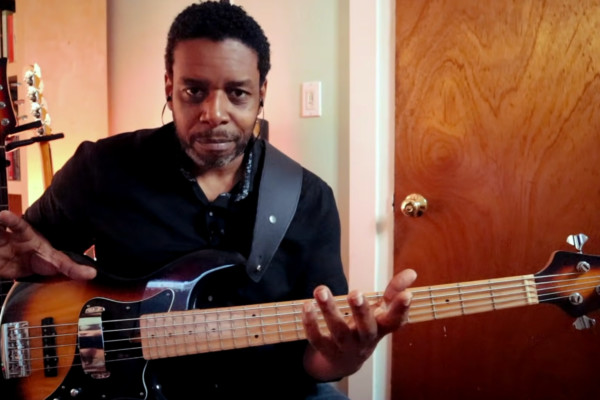Strategies for Better Intonation

If you are an upright bassist, then intonation is on your mind. I’ve talked in the past about using drones to help solidify intonation, but this is just one of seemingly innumerable strategies to improve pitch. Today we’ll touch on a few other approaches.
You can do all of these exercises with music you are working on or, of course, with scales. Many intonation exercises are easiest and most beneficial with the bow, including these.
Utilize Your Open Strings
Playing a note as a double stop against an open string can help us to hear more clearly whether the closed note is in tune or not. By using an open string as reference we can help to solidify the pitch on the closed note, both physically and aurally. Notes that would create perfect fifths, octaves or thirds against an open string are natural choices for this type of intonation check as most people can hear these intervals very easily.
- Pick a note. In the example below it is our last note, E.
- Place a fermata over it.
- Play the passage (below)
- If the E is out of tune against the open A string, adjust it and try the passage again.
- Aim to get the note in tune immediately, without any need to adjust.
- Repeat as needed.

Stop the Needle
Set your tuner somewhere visible, and close, and where it can easily and quickly register the notes you are playing. I prefer tuners that clip on to the instrument for this exercise as they often register the pitch more quickly than other models.
Pick a problematic note in your phrase and mentally place a fermata over it. When you get to this note in the phrase, hold the pitch and check your accuracy using the tuner.

If you are sharp or flat, adjust it and the give the passage another try, adjusting based on your previous experience. Aim to “stop the needle” of your tuner immediately. When you can do this, play the passage as written.
Create Sympathetic Vibrations
Every time you play an in tune note on your bass, you create a sympathetic vibration somewhere on another string. These sympathetic vibrations are often easiest to hear when we play E, A, D or G. This is because they often cause an open string, or its half-string harmonic (12th fret equivalent) to vibrate sympathetically. The first note bassists usually discover this with is the G on the E string, as playing this low G in tune will cause the open G string to vibrate fairly significantly.
Isolate a note in a phrase you are working on. When you get to that note play it full length, but take the bow immediately off the string. After you stop the note, listen for the “ringing,” caused by sympathetic vibrations, after the note sounds.

The more accurate you are, the more prominent the sympathetic vibrations will be. If you don’t hear anything, if its dead silence, then you missed it. Give it another shot.
Dr. Donovan Stokes is on the faculty of Shenandoah University-Conservatory. Visit him online at www.donovanstokes.com and check out the Bass Coalition at www.basscoalition.com.




Intonation is always on my mind. I want to get the whine, the twang the clarity of a pro, instead of the muffled and dead sound I sometimes get, like when my fingers are sore from not practicing enough. I’ll keep working on it and thanks for the tips.